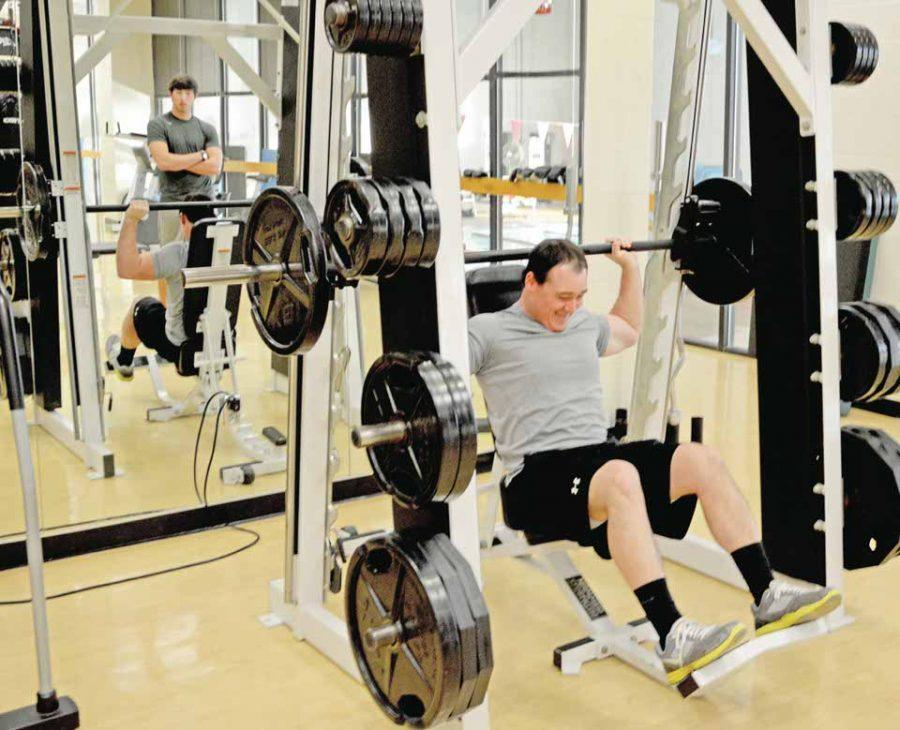The department of kinesiology keeps students active by offering a variety of activity classes to work into their course load.
Kinesiology is a wide field that ranges from sport pedagogy, which trains physical education teachers, to sport management on the administrative side, to exercise science, which entails the science behind athletics. As a professor of exercise science, Phillip Bishop’s advice regarding fitness is not about the magic fitness plan, but developing a fitness lifestyle.
“Active is more than going to the gym and sweating,” Bishop said. “If you can’t keep it up, don’t do it. Do what you can do for the rest of your life.”
Bishop suggests parking farther away and not taking the bus. Students can get active by walking between classes each week. The key to fitness, Bishop said, is keeping it up, which means finding something enjoyable that makes sweating worthwhile.
Bre’anna Elbon, a senior majoring in exercise science, is the president of the UA Exercise Physiology Club, which focuses on health and fitness. The club is involved with services like training faculty and staff for the Crimson Couch to 5K program and has a weekly physical activity for its members. Elbon said students need to be aware of the vitality of fitness and integrate it into their schedule to make the commitment easier.
“You have to make your schedule around being active,” Elbon said. “Instead of fitting it in where you can, work around it.”
By taking classes offered by the kinesiology department, physical activity becomes mandatory. With a variety of options, the classes offer a way to get involved and learn more about an activity. Matthew Curtner-Smith, the kinesiology department head, instructs a running class where he teaches the skills and aspects necessary to running, such as where to buy shoes, how to sign up for races or how to join running clubs.
“Sports and physical activities are a wonderful, human thing to do,” Curtner-Smith said. “It’s a complex in which you can grow personally in many ways.”
Curtner-Smith’s advice for fitness planning is making realistic goals. He said too many people go too hard too early; the emphasis should be on the difference in the amount of activity. Twenty-five minutes of activity a day is better than not doing any. Curtner-Smith said he does not even like to think of it as working out.
“Too many people are working,” Curtner-Smith said. “To use the term again in physical activity is not helpful. Think of it as play. I don’t think I’m working out, I think I’m out playing.”
Holly Judge, a junior majoring in mechanical engineering, took a kinesiology Zumba class to do something fun with her friends. She said taking the class together was one of their last opportunities to be in the same class and gave her a reason to go to the gym.
“It was nice taking it as a class because you had to go. Other semesters I’d get tired and find an excuse not to,” Judge said. “I suggest it to other students because it helps them commit for an entire semester.”









